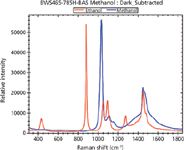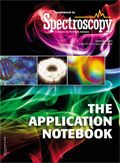Identification and Quantification of Methanol in Contaminated Spirits
Over the past several years, an alarming trend has become evident, highlighting serious issues related to contaminated alcohol within the European Union, particularly Eastern Europe (1).
Over the past several years, an alarming trend has become evident, highlighting serious issues related to contaminated alcohol within the European Union, particularly Eastern Europe (1). This issue came to a breaking point in September of 2012 when the Czech Republic officially banned the sale of hard liquor after 20 people died from the consumption of methanol-laced spirits (2). After an exhaustive study of different screening tools, the Czech Republic turned to the use of portable Raman spectroscopy as the screening tool of choice for the identification and quantification of methanol in contaminated spirits. In this application note we will discuss the reasons why portable Raman spectroscopy is the ideal choice for this application and we will show a real world example of methanol-laced rum.
Key Advantages
Raman is well recognized as an analytical tool for the discrimination of similar molecules such as ethanol (C2H5OH) and methanol (CH3OH) as shown in Figure 1. But what makes Raman ideally suited for this particular application over comparative technologies such as FTIR is the ability to measure through optically transparent containers and its insensitivity to interference from water. These two key properties have allowed screeners to accurately test for the presence of methanol down to ~1% by volume in the field without the need to open the bottles being tested.

Figure 1: Spectra of reagent grade ethanol (red) and methanol (blue).
Experiment and Results
To show the efficacy of this technique, we performed an in-house study measuring commercially available coconut rum which was diluted with methanol in concentrations between 0.33% and 5.36%. Similar to the method currently being used in Europe, we utilized the portable i-Raman Plus (B&W Tek, Inc., USA) because of its high sensitivity, high resolution, and fiber-optic probe sampling, to measure the Raman spectra of the mixtures as shown in Figure 2a. The spectra were then analyzed in BWIQ chemometric software (B&W Tek Inc., USA). A PLS regression model was developed on the data that was baseline corrected using airPLS. The single factor model developed over the range from 1010 cm-1 and 1030 cm-1 gave the calibration curve shown in Figure 2b, which has a RMSECV of 0.28.

Figure 2: Raman spectra of methanol laced rum with varying concentrations of methanol (a) concentration curve generated from PLS1 regression model (b).
Conclusion
These results verify the validity that portable Raman spectrometers can be used for not only the identification of adulterants, but also for providing quantitative results. This technique can be expanded to other types of adulteration including diethylene glycol-laced glycerin (3) and even water dilution of spirits.
References
(1) D.W. Lachenmeier, K. Schoeberl, F. Kanteres, T. Kuballa, and E.M. Sohnius, J. Addiction, 106 (Suppl.1), 20–30 (2011).
(2) D. Spritzer and D. Bilefsky, New York Times 17 September 2012.
(3) C.M. Gryniewicz-Ruzicka, S. Arzhantsev, L.N. Pelster, B. Westenberger, L.F. Buhse, and J.F. Kauffman, Appl. Spectrosc. 65(3), 334–341 (2011).
B&W Tek, Inc.
19 Shea Way, Newark, DE 19713
tel. (302) 368-7824, fax: (302) 368-7830
Website: www.bwtek.com
